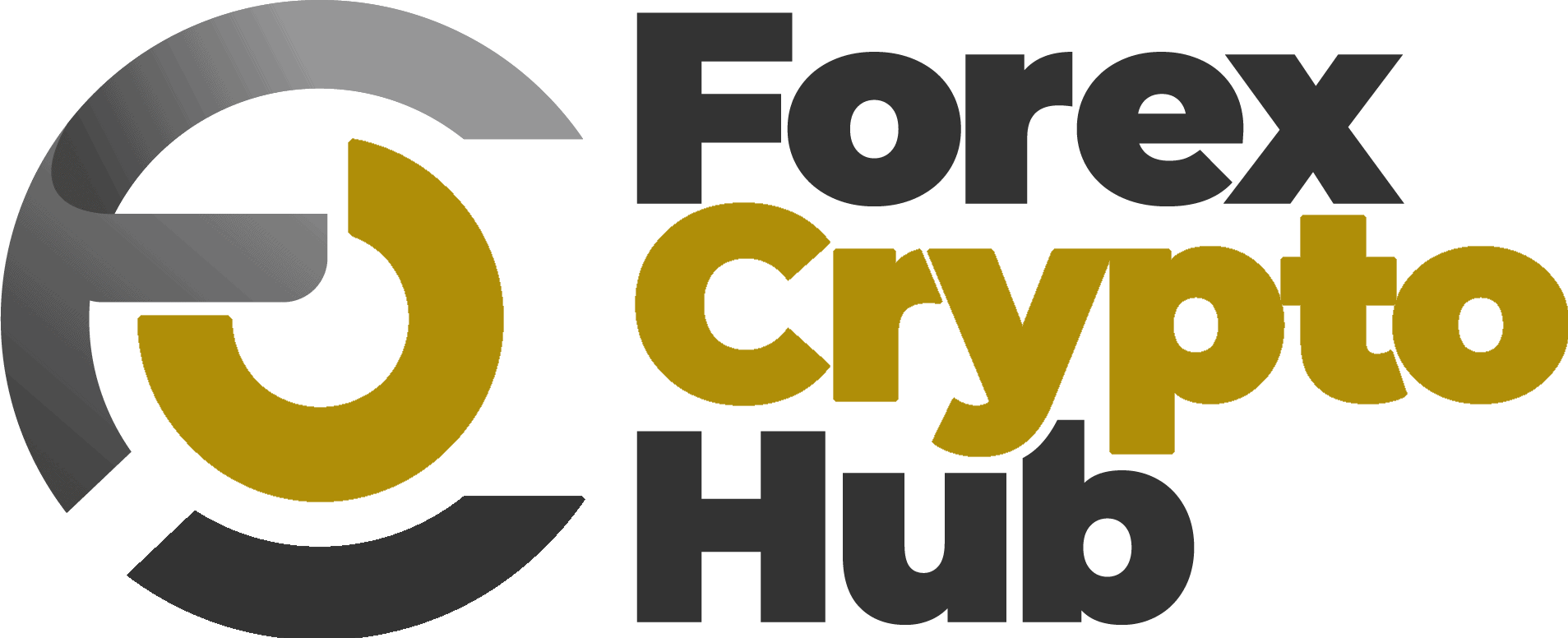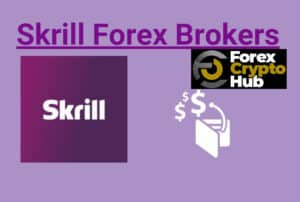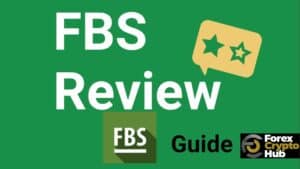2024’s Largest Forex Brokers by Trading Volume: A Comprehensive List

The foreign exchange market is a dynamic arena where trillions of dollars change hands daily, and the biggest forex brokers play a crucial role in facilitating these transactions. As we step into 2024, the landscape of forex trading continues to evolve, with some brokerage firms emerging as industry giants based on their trading volumes. Understanding which brokers dominate the market has an impact on traders’ decisions and shapes the overall forex ecosystem.
In this comprehensive list, we’ll explore the largest forex brokers by volume, shedding light on what makes them stand out in the competitive world of currency trading. We’ll examine the factors that contribute to a broker’s size and influence, delve into the top players that currently lead the pack, and discuss how to choose a reputable large broker. Additionally, we’ll look at future trends that may affect the forex brokerage scene, giving traders and investors valuable insights to navigate the ever-changing forex market.
Factors Influencing Forex Broker Size

The size and influence of forex brokers in the global market are determined by several key factors. Understanding these elements has an impact on how traders evaluate and choose their brokers, and sheds light on the dynamics of the forex industry.
Trading Volume
The most relevant criterion to rank forex brokers is the average volume of daily transactions (AVDT). This measure provides a clear picture of a broker’s activity and market presence. To be considered large, a forex broker must have an AVDT of at least one billion dollars, which equates to more than 10,000 standard lots traded daily [1]. High-quality forex brokers typically have an AVDT of at least three billion dollars, demonstrating their significant market share and liquidity provision.
The global forex broker market was estimated to be worth USD 5.20 trillion in 2023, with projections suggesting a market growth of 10.9% by 2032, potentially reaching a value of USD 13.00 trillion [2]. This substantial market size underscores the importance of trading volume as a key factor in determining a broker’s standing.
Number of Active Clients
The number of active clients a broker has plays a crucial role in its size and stability. A larger client base typically leads to more consistent trading volumes and reduced volatility in daily transactions. The COVID-19 pandemic, for instance, led to a surge in online trading activity, particularly among millennials. This resulted in significant growth for platforms like Robinhood and eToro, which experienced a notable increase in user numbers [2].
Brokers with a diverse and extensive client base are better positioned to handle market fluctuations and maintain steady growth. For example, Interactive Brokers reported a net revenue of USD 4.30 billion in 2023, marking a 38.7% year-over-year growth, largely due to its competitive pricing and wide variety of tradable assets [2].
Regulatory Compliance
Regulatory compliance is a critical factor that influences a forex broker’s size and reputation. Operating without proper licensing and regulatory compliance is not only illegal but also highly detrimental to a broker’s credibility and success [3]. Reputable regulatory bodies such as the Financial Conduct Authority (FCA) in the United Kingdom, the Australian Securities and Investments Commission (ASIC), and the Cyprus Securities and Exchange Commission (CySEC) impose stringent regulations and provide robust oversight [4].
Brokers regulated by these authorities are more likely to adhere to strict standards and offer higher levels of protection for traders. This includes maintaining minimum capital requirements to ensure financial stability and the ability to meet obligations to clients [4]. Additionally, regulated brokers are required to keep client funds separate from their operational funds, providing an extra layer of security for traders’ investments [4].
Non-compliance with regulatory requirements can result in severe consequences, including fines, license suspension or revocation, and legal action. Such penalties can significantly impact a broker’s size and market position [4]. Therefore, regulatory compliance serves as a key indicator of a broker’s reliability and long-term viability in the forex market.
Top 5 Largest Forex Brokers by Volume
Broker Rankings
The forex market has experienced significant growth in recent years, with the global forex brokers market valued at USD 5233.47 billion in 2023 and projected to reach USD 13038.50 billion by 2032, growing at a CAGR of 10.9% [3]. This growth has led to increased competition among forex brokers, with some emerging as industry leaders based on their trading volumes.
According to recent data, the top 5 largest forex brokers by volume are:
- IC Markets
- Forex.com (StoneX Group)
- XM
- Saxo Bank
- HF Markets
IC Markets stands out as the largest online forex broker, with a daily average volume of USD 22.68 billion [4]. The Australian brokerage has carved a niche for itself in the forex market, operating on an ECN model and offering top trading technology and incredibly low spreads [1].
Forex.com, part of the StoneX Group, secures the second position with a daily forex market volume of USD 18.60 billion [4]. The broker has gained popularity due to its competitive pricing and wide variety of tradable assets [2].
The largest Forex brokers in the world are:
- IC Markets – 22.68 Billion
- Forex.com – 18.6 Billion
- XM Group – 16.08 Billion
- Saxo Group – 15.4 Billion
- HF Markets – 13.8 Billion
Based on daily trading volumes
Key Statistics
IC Markets reported a staggering USD 1.20 trillion in trading volume for March 2023 alone [5]. This high volume demonstrates the broker’s strong liquidity and popularity among traders who require fast and reliable execution.
Forex.com, as part of the StoneX Group, has shown impressive growth. The parent company reported an operating revenue of USD 2914.10 million for 2023, marking a 38.3% increase compared to the previous year [2].
XM, the third-largest broker by volume, handles an average daily volume of USD 16.08 billion [4]. The company has gained traction in the forex trading community due to its no-dealing desk model and fast execution speeds.
Market Share Analysis
While these online brokers handle significant volumes, it’s important to note that the largest market share in global forex trading belongs to major financial institutions. Deutsche Bank leads with a 10.89% market share, followed by UBS with 9.69%, and JP Morgan with 8.67% [4].
The collective market share of the top five trading services, including State Street and XTX Markets, accounts for 44% of all forex trades [4]. This concentration of trading volume among a few key players highlights the competitive nature of the forex market.
In conclusion, the forex brokerage landscape has an impact on traders’ decisions and shapes the overall forex ecosystem. As the market continues to grow, these top brokers are likely to play an increasingly important role in facilitating global currency transactions.
Choosing a Large Forex Broker

Selecting the right forex broker has a significant impact on a trader’s success in the dynamic foreign exchange market. Large forex brokers often offer unique advantages, but they also come with potential drawbacks. Here’s what traders should consider when choosing a large forex broker.
Benefits of Trading with Large Brokers
Large forex brokers typically provide several advantages that can enhance a trader’s experience:
- Regulatory Compliance: Top-tier brokers are usually regulated by respected financial authorities such as the Australian Securities and Investments Commission (ASIC), the National Futures Association (NFA) in the US, or the Financial Conduct Authority (FCA) in the UK [3]. This regulation ensures that the broker follows standard trading practices and safeguards client funds.
- Financial Security: Large brokers often have robust financial backing, reducing the risk of insolvency. Many separate client funds from operational funds, providing an additional layer of protection [3].
- Advanced Technology: Leading brokers invest in cutting-edge technology, offering fast execution speeds and minimal slippage. Some use fiber optic cables to ensure optimal order execution [3].
- Comprehensive Customer Support: With forex markets operating 24 hours a day, large brokers typically offer round-the-clock customer service [3].
- Diverse Account Options: Top brokers provide various account types to suit different trading styles and deposit amounts, including mini, micro, standard, and VIP accounts [3].
Potential Drawbacks
While large brokers offer numerous benefits, there are potential downsides to consider:
- Higher Costs: Some large brokers may charge higher fees or spreads to cover their extensive services and infrastructure.
- Less Personalized Service: With a large client base, individual attention might be limited compared to smaller brokers.
- Complex Platforms: Advanced trading platforms offered by large brokers might have a steeper learning curve for beginners.
Factors to Consider
When choosing a large forex broker, traders should evaluate the following factors:
- Regulation: Ensure the broker has an impeccable regulatory status to protect your investments [3].
- Security Measures: Look for brokers that implement robust security protocols and encryption technology to safeguard your funds and personal information [3].
- Execution Speed: Test the broker’s execution speed using their demo trading feature to ensure it meets your trading requirements [3].
- Customer Service: Verify the availability and responsiveness of the broker’s customer support team [3].
- Account Types: Check if the broker offers account options that align with your trading goals and capital [3].
- Payment Methods: Evaluate the available deposit and withdrawal options, including any associated fees or minimum requirements [3].
- Trading Platform: Assess the broker’s trading platform for features like real-time news feeds, advanced charting tools, and customizable indicators. Popular platforms like MetaTrader 4 or 5 and TradingView are often preferred for their robustness [3].
- Educational Resources: Consider brokers that provide comprehensive educational materials, webinars, and market analysis to support your trading journey [4].
By carefully weighing these factors, traders can make an informed decision when choosing a large forex broker that best suits their needs and trading style.
Future Trends in Forex Broker Size

Industry Consolidation
The forex market is experiencing significant growth, with the global forex brokers market valued at USD 5233.47 billion in 2023 and projected to reach USD 13038.50 billion by 2032, growing at a CAGR of 10.9% [3]. This rapid expansion has an impact on the competitive landscape, potentially leading to industry consolidation as larger brokers seek to maintain their market share and smaller players struggle to keep up with technological advancements and regulatory requirements.
Technological Advancements
Technology integration has revolutionized forex trading, becoming a critical factor in achieving trading success [3]. Sophisticated software and applications now allow traders to perform complex analyzes and execute trades with unprecedented speed, capitalizing on the forex market’s inherent volatility [3]. The rise of mobile trading platforms has opened the doors to a broader audience, eliminating the need for complex desktop setups [3].
Big data analytics has emerged as a transformative force in forex trading, providing deep insights into the market’s intricate workings [3]. This technology allows traders to digest and analyze vast datasets in real-time, broadening the analytical horizon beyond traditional methods [3]. Natural Language Processing (NLP) is also making significant strides, automating the interpretation of vast amounts of textual information from financial news, expert analyzes, and social media [3].
Artificial Intelligence (AI) and machine learning technologies have ushered in a new era of market analysis and execution strategies [3]. These advanced technologies can sift through and analyze complex market data far beyond human capacity, delivering critical insights that can significantly elevate trading performance [3].
The emergence of blockchain technology and cryptocurrencies has transformed the landscape of forex trading, merging traditional fiat currencies with digital assets [3]. Blockchain introduces a decentralized, secure, and transparent framework for executing transactions, challenging traditional financial infrastructure and currency systems [3].
Regulatory Changes
Regulatory bodies are strengthening their frameworks to regain the trust of market participants [2]. For instance, the US Commodity Futures Trading Commission (CFTC) has proposed new rules requiring brokers to disclose more details on their trading activities [2]. The European Securities and Markets Authority (ESMA) has introduced regulations limiting leverage amounts offered by brokers to retail investors, leading some brokers to reduce leverage ratios or exit the European market [2].
The UK Financial Conduct Authority (FCA) has focused on crypto regulations, implementing marketing rules for crypto service providers to ensure consumer understanding of investments [2]. The increasing penetration of cryptocurrencies and speculations regarding Central Bank Digital Currencies (CBDCs) are forcing financial regulators to rethink their foundational principles [2].
These regulatory changes pose challenges for forex brokers, who must prioritize compliance for uninterrupted operations [2]. The evolving regulatory landscape may have an impact on market access, with stricter regulations potentially limiting the availability of certain trading products and reducing leverage options for retail traders [4].
Conclusion
The forex market’s rapid evolution and the emergence of dominant players have reshaped the trading landscape. Large brokers now wield significant influence, offering advanced technology, robust regulatory compliance, and extensive market access. These developments have led to a more competitive environment, pushing brokers to innovate and adapt to changing trader needs and regulatory requirements.
Looking ahead, the forex brokerage industry is poised for further transformation. Technological advancements, including AI and blockchain, are set to revolutionize trading practices, while regulatory changes may reshape market access and broker operations. As the industry continues to grow, traders must stay informed and choose brokers wisely to navigate this dynamic financial ecosystem successfully.
FAQs
Which forex broker currently has the highest trading volume?
As of 2024, Exness is the forex broker with the highest trading volume, boasting a monthly trading volume of USD 2.27 trillion. Other brokers with significant volumes include AvaTrade with over USD 70 billion per month, and FxPro with an average daily trading volume (ADTV) of USD 6.50 billion.
What is the daily trading volume of the forex market in 2024?
In 2024, the forex market is experiencing a daily trading volume of approximately USD 6.60 trillion, indicating robust growth and high liquidity in the market.
How many forex traders are there globally in 2024?
By 2024, the global forex trading community has grown to about 14.5 million traders. Among these, approximately 5.9 million are active day traders, which constitutes about 41% of the total number of traders.
References
[1] – https://www.fxempire.com/brokers/best/high-volume
[2] – https://www.orbex.com/blog/en/2023/12/forex-trends-to-look-out-for-in-2024
[3] – https://www.fxleaders.com/forex-brokers/forex-brokers-by-volume/
[4] – https://tradingbeasts.com/the-biggest-forex-brokers-in-the-world/
[5] – https://thebossmagazine.com/forex-outlook-2024-trading-in-a-changing-world/



